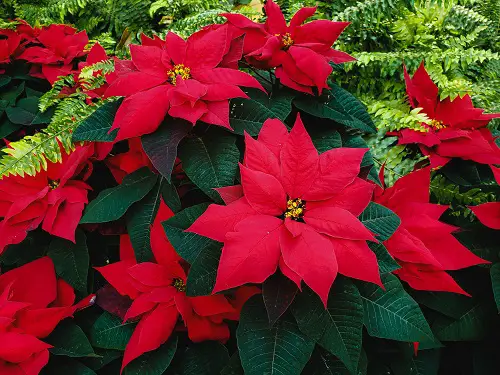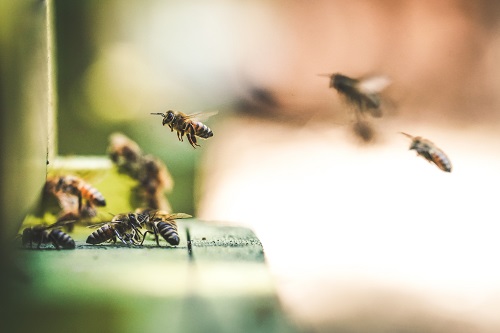12 Poisonous Indoor Plants That are Toxic for Pets and Children
Very often we pick plants for our homes without having prior knowledge about their toxic nature. The local nurseries we pick them up from usually label them under house plants or indoor plants. But nobody will tell you that they can be poisonous in nature.
If these plants are ingested by a cat, dog, or even your little kid, it can have a very bad effect on them. Leaves of some plants even secrete oils that can cause skin allergic reactions only by touching them. On the other hand, seeds of some plants have proven to be fatal as well.
Vomiting, nausea, irritations, and more! These plants contain toxins like glycosides, oxalates, volatile oils, etc that might cause such problems. Rush to your nearest emergency hospitals if your pet or your child ingests these toxic plantsor you notice a rash or any other allergic reaction. If someone near you experiences any symptoms, we urge you not to even try to treat them yourself. It might save you from a lot of stress and trouble if treated timely.
Common Toxic Houseplants
Keeping plants at home should be anything but stressful. After all, you keep them indoors for a relaxed setting. A little research from the right resource can help you and your family (that includes your babies and your fur babies) live in a safe environment!
So here is a list of a few popular house plants that have proven to be toxic and could make little people and your pets sick.
1. Sago Palm
Sago palm tops our list of toxic plants for humans and pets. In fact, we should be saying “life-taking toxic”. We have been growing sago palm for decades now in our houses (indoors and outdoors both) but little did we know that it was extremely toxic for every member, even the pets.
We agree that it has a beauty of its own, and the tropical looks add to your indoors and your yards. The needle-like dark green leaves of this plant are intriguingly beautiful. If we say intriguing, then imagine how strikingly appealing would they seem to your cat or your child! The fronds are attached to the bulbous scaled stem that stores the seeds which happen to be the deadliest.

Toxins Found:
The seeds contain high levels of cycasin. Other toxins found are neuro-cycasin and toxic amino acids.
Symptoms:
If ingested, the symptoms might start appearing within the next 12 hours. Rush to the emergency! Symptoms may include vomiting, diarrhea, blood in the nose, stool, and joints, seizures, liver failure leading to immediate death.
2. Fiddle Leaf Fig
We’ll categorize fiddle leaf plants in the top-tiered toxic plants. This is the real-life poisonous apple from the fairy tale “Snow White”. A bite from the leaf can cost you the life of your loved one. Yes, it is that toxic!
Very commonly found in most of our houses, fiddle leaf fig was once every interior designer’s dream plant. And we wouldn’t blame them because who would not love the aesthetic edge this plant adds to your living room. Not only that but it is a low maintenance indoor plant that can do well in part shade.

Toxins Found:
The leaves of these plants are rich in calcium oxalate crystals that are extremely toxic in nature. If taken in, it might not affect an adult but for a child or a pet, it can prove to be lethal.
Symptoms:
They can cause oral irritation, excessive drooling in pets, vomiting, loss of appetite, tummy aches, and in worst cases, kidney failure. See a doctor immediately.
Give the nourishment and care they deserve with this guide to choose a perfect pot for your fiddle leaf trees.
3. Oleander
Oleander is a flowering shrub that is cultivated worldwide. It blooms beautiful pink flowers in spring. It is an easy-growing house plant with very stunning looks that make a statement to your indoors.
Someone to nibble on them in the house, think twice as they are extremely toxic plants. Every part of this plant can prove to be fatal even for adults. Even touching the leaves and stem can cause skin irritation.

Toxins Found:
The toxins found in every part of the plant include oleandrin, Neriin, digitoxigenin, and more.
Symptoms:
The poisoning may cause irregular heartbeat, weakness, low blood pressure, blurred vision, headache, dizziness, depression, fainting, and death are just to name a few.
4. Philodendron
A very common house plant, philodendron has so many varieties in its family that include Swiss cheese, Heartleaf, and Fiddle leaf as well. Almost all varieties of philodendron are toxic for humans as well as pets, though some may be mildly toxic while others may be toxic to the point of fatality. They might be the easiest plants to grow indoors with their breathtaking foliage that can thrive well in a minimum amount of sunlight. But think twice before keeping them in a home where you have little nibblers roaming around. Or keep them at a spot that is unreachable.

Toxin Found:
Commonly found toxin is calcium oxalate in the leaves of the philodendron that can be fatal for humans and pets.
Symptoms:
Oral irritation with the swelling of the mouth and tongue is very common when you are mildly affected. Excessive drooling in dogs, vomiting, and difficulty in swallowing are some of the other symptoms to watch out for.
5. Crown of Thorns
A thorny succulent with true leaves that blooms in clusters of gorgeous red flowers. Also known as Christ of thorns, it is succulent with true leaves that are very easy to grow. These are common house plants but with thorny stems and poisonous sap that comes out of the leaves and stems when bruised, caution should be practiced. Every part of the plant is toxic. So even handling the plants without gloves is not advisable.

Toxins Found:
The sticky liquid resembling milk, which comes out of the injured sap and leaves, contains caustic chemicals. They also contain Phorbol esters that are highly toxic.
Symptoms:
The sticky sap produced is toxic and can easily irritate the skin and eye if comes in contact. If ingested, it might cause severe abdominal pain, mouth and throat ulcers, vomiting, weakness, diarrhea, and many more.
6. Peace Lily
Breathtakingly gorgeous, the peace lily is a statement-making green addition to your home. It is easy to take care of this plant and is usually kept in bedrooms for its air-purifying abilities. This plant doesn’t require bright sunlight to grow. It blooms a fine-sized white lily among the glossy broad dark green leaves.
The only hitch while keeping this plant at home is its toxic nature to kids and pets. The pollen from the spadix of the flower can cause oral annoyance. Fence off the area in your gardens where peace lily grows or keep them out of reach when placed indoors.

Toxins Found:
The calcium oxalate crystals present in the plant are the cause of toxicity in peace lily.
Symptoms:
The animals can get symptoms like inflamed and irritated mouth, excessive drooling, vomiting, and diarrhea after ingesting any part of the plant. They may have trouble breathing as well due to an inflamed airway.
If you have a busy schedule or travel very often, we have the solution just for you. Here are some of the best home and office plants that require less care and light.
7. Croton
Crotons are aesthetic house plants that need plenty of water for their beautiful foliage. The bold and bright foliage needs undisturbed care due to its tropical nature. Croton is an evergreen plant that has a life span of around two years.
These commonly kept house plants are toxic to humans as well as house pets, mostly cats and dogs. Every part of this plant is toxic, from the leaves to the stem and roots. While touching might cause skin rash, nibbling and ingestion of the seeds and oil may cause death.

Toxins Found:
Some naturally occurring chemicals like 5-Deoxygenol are found in the bark, sap, and roots of a croton.
Symptoms:
Commonly occurring symptoms of croton (upon chewing only) are blistering and swelling of the mouth area. But if any part of the plant is ingested, it may cause vomiting and diarrhea. While touching the plant only might cause a skin rash.
8. Amaryllis
A very easy flowering plant to grow in your garden as well as in your indoor space, Amaryllis is breathtakingly beautiful with its prominent flowers. They grow well in flower beds and in clusters. This is a holiday plant that is usually used for decoration or given as gifts.
The bulb is the main toxic part of the plant but the leaves and the stem also contain toxins. They are poisonous to the human body and pets or they have long-term negative effects on one’s health.

Toxins Found:
The basic alkaloid, lycorine is present in the bulb which is responsible for all the clinical effects. Also, traces of another Tazetine are found in the plant.
Symptoms:
Long-term effects may include mental health disorders and lack of appetite. Ingestion may cause diarrhea, vomiting, tremors, and excessive saliva.
9. Dumb Cane or Leopard Lily
Dumb cane is a very weird name for a plant and you may ask why is it called that. Well, the main reason behind the name is the temporary speechlessness it causes when nibbled upon. Dumb cane is a popular house plant that has broad leaves with a white pattern on them. It thrives so well in low light conditions which might be partly the reason for its popularity as a houseplant.

Toxins Found:
The plant cells are loaded with toxic crystals of raphides that have calcium oxalate.
Symptoms:
The sap of the plant is irritating to the skin if comes in contact. It can also cause swelling of the tongue and throat if taken in orally though it is not considered fatal to animals and humans. Temporary loss of speech is the main symptom.
10. Mistletoe
Mistletoes symbolize holiday romance but did you know that these are known to be highly poisonous plants? While the holiday festivities last, be vigilant with the plant being around the house. The berries of these plants are mysteriously gorgeous. With all the guests coming around and family getting together for the holidays, you never know what might happen. Keeping them away from small kids’ and pets’ reach is highly advised.

Toxins Found:
The plant contains harmful chemicals like Viscotoxins and Phoratoxins (poisonous proteins).
Symptoms:
Slowed heartbeat and gastric-intestinal issues are common symptoms after ingestion of the berries. Other than these, blurred vision, fever, and hallucinations are also pretty common symptoms. It has also been known to cause a miscarriage for pregnant women.
11. Poinsettia
Poinsettia is a popular Christmas plant that is also well known for its toxic nature. The bright red and green foliage makes it symbolic of Christmas. These plants are widely used for Christmas decoration and given as gifts. They can last up to 2 to 3 months if grown at home with proper care.
They have developed a bad reputation for being toxic but the truth is that they have mild toxicity and don’t cause any extreme issues when ingested.

Toxins Found:
The milky sap in the stem and the leaves contain chemicals like diterpenoid Euphorbol esters and Saponins.
Symptoms:
After eating a part of this plant, you may experience mild abdominal pain, vomiting, and diarrhea. There are no severe signs of poisoning to watch out for. Simply rinse the mouth if any part of the plant is taken in. It can also cause allergic reactions like breathing difficulty, sneezing, and coughing.
Brighten up grey, dull winter gardens with these 10 types of trees you can grow in your garden if you live in cold weather areas.
12. Devil’s Trumpet
Devil’s trumpet is an outdoor plant that can be the focal point of your garden with its beautiful flowers and easy-to-grow care routine. They can also be grown indoors. Just provide them with ample sunlight and a draft-free spot. They have bluish-gray, fairly big blooms that are bold and exhibit a great vibe. The only drawback of keeping this plant at home is its toxicity. It may be poisonous to large animals like castles and horses. The seeds and flowers are the main toxic parts.

Toxins Found:
The commonly occurring toxins in devil’s trumpet are Tropane alkaloids. These alkaloids have strong anticholinergic properties.
Symptoms:
Initial symptoms occur 20-30 minutes after ingestion of the plant that includes hallucinations, thirst, dilated pupils, blurred vision, and difficulty in speaking and breathing.
Out of Sight, Out of Mind
Well, we understand that it was a shocker for you when you got to know about the toxic nature of your beloved plant. Letting it go is hard but what is even harder is to see your kid or pet suffer from it.
Tough call!
There is something that you can do about it. Keep them at the spots where your little ones can’t reach them. You could place them on the top rack of the bookshelves or any place that is unreachable. Now your doggo might not even try to reach that high but what to do with a cat’s curiosity! It will jump up high and do whatever it can to get the paws on the favorite foliage. Cats get more attracted to lacey, thin-leafed plants that will move around with a subtle whiff of air. Pick plants that have big leaves and are hard to move to catch a cat’s attention.
So the conclusion we get out of it is that if these plants are already in your home or you plan to keep them because of their breathtaking foliage, then we suggest that you keep them out of reach of little hands and paws. The less they will see them, the more easily will they forget about them.
Hence out of sight, out of mind!



